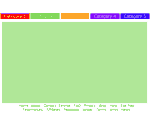Jul 10
6
Information Architecture – Rocket Science Simplified
I can’t count how many times in the past couple years I’ve heard people talk about how important information architecture (also referred to as IA) is to SEO. Yet it’s almost always presented in a way that calls upon a lot of highly technical lingo. Taxonomy. UX. Contextual browsing. Mental model. Ontology. Semantic web… Honestly speaking, I don’t even know what half the lingo means in the moment I hear some of these words. And my eyes instantly gloss over. Yet in truth, even though I’m not a rocket scientist (nor a library sciences major), it turns out I totally get it – not from a linguistic perspective, but instead, from a visual and marketing perspective. So this is the first in a series of articles that will present otherwise highly complex concepts in hopefully easy to understand ways. Caveat Before I proceed, let this be a warning to anyone reading this article who, themselves, might in fact be, speak and breathe in highly technical terms. I’m not here to profess that I fully grasp every single thing about IA. In fact, I may even over-simplify some of the concepts I discuss. I ask your forgiveness in advance, simply because my goal of this and future related articles is to help non-technically advanced people in our industry. The more I (we) can help others understand these principles and concepts, the better we as an industry will become, and the higher quality both of users and search engine results… Rocket Science Simplified Okay – so what’s this thing all about? From an SEO perspective, Information Architecture, in plain English, is: The way and means by which content on a web site is organized and presented for users and the search engines to be able to easily digest and gain the most value from.

Read more:
Information Architecture – Rocket Science Simplified